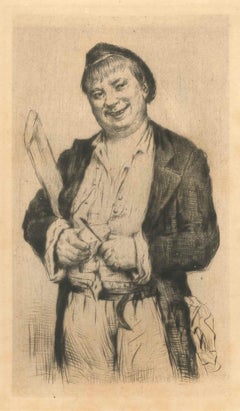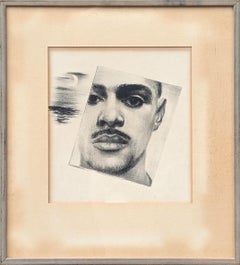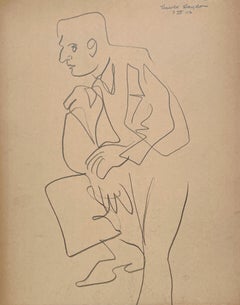Marcellin Desboutin Art
Marcellin Desboutin was born in Cérilly in 1823. In 1945, he worked at the atelier of the sculptor Louis-Jules Étex at the École des Beaux-Arts of Paris, and he soon attended the painting course of Thomas Couture. He traveled along with Britain, Italy and Luxembourg. In 1857, he inherited a big villa near Florence, where he lived with Edgar Degas and led a luxurious life. In 1873, he came back to Paris, where he spent a lot of time with Édouard Manet and Émile Zola at the Café Guerbois. Desboutin passed away in 1902, Nice, France.
Early 1900s Modern Marcellin Desboutin Art
Pencil
1880s Marcellin Desboutin Art
Etching
1940s American Modern Marcellin Desboutin Art
Paper, Charcoal, Graphite
Mid-20th Century American Modern Marcellin Desboutin Art
Paper, Graphite
1970s Modern Marcellin Desboutin Art
Conté, Laid Paper, Color Pencil
1940s Modern Marcellin Desboutin Art
Paper, Charcoal, Carbon Pencil
1920s Modern Marcellin Desboutin Art
Carbon Pencil, Magazine Paper
Mid-20th Century American Modern Marcellin Desboutin Art
Paper, Graphite
Mid-20th Century Marcellin Desboutin Art
Watercolor, Etching
1940s Modern Marcellin Desboutin Art
Color Pencil
1910s Modern Marcellin Desboutin Art
Paper, Crayon, Pencil
1950s American Modern Marcellin Desboutin Art
Paper, Watercolor, Gouache, Pencil
2010s Contemporary Marcellin Desboutin Art
Acrylic, Ballpoint Pen, Pencil, Color Pencil
1920s Modern Marcellin Desboutin Art
Paper, Watercolor, Pencil



